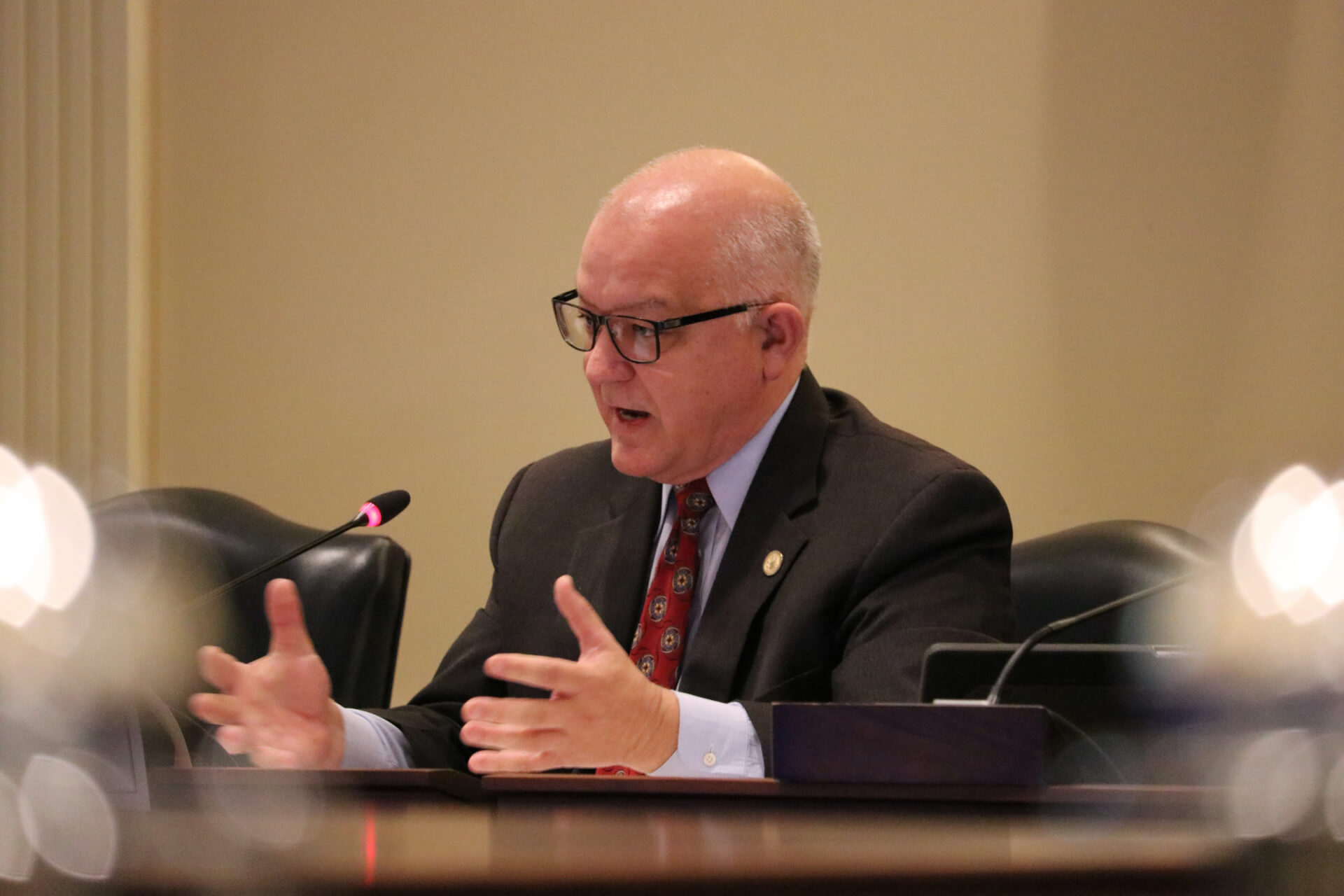Budget Panels Updated on COVID-19 Aid Spending, Purple Line Wrangling

Officials have spent more than 90% of the $1.653 billion allocated to Maryland as part of the Congressional Coronavirus Relief Fund, Department of Budget and Management Secretary David R. Brinkley told lawmakers Thursday.
Gov. Lawrence J. Hogan Jr. (R) is holding back roughly $117 million left from Maryland’s share of the fund, established as part of the Coronavirus Aid, Relief and Economic Security Act that Congress passed in March. Brinkley said the money is not being spent in case it is needed to deal with a second wave of coronavirus infections, which could arrive at the same time as a flu outbreak.
“We are ensuring that all of this CRF funding is going to be spent, but it’s going to be spent wisely and appropriately,” Brinkley said during a virtual joint meeting of the Senate Budget and Taxation Committee and House Appropriations Committee.
Brinkley provided a breakdown of where Maryland disbursed the $1.536 billion:
-
$364 million to local governments. (Local governments in Maryland with a population of more than 500,000 were, separately, allocated about $691 million directly by the federal government.)
-
$328 million toward public health and safety payroll.
-
$239 million in economic support, including grants and loans for small business assistance and non-profits.
-
$198 million in medical expenses, including all types of personal protective equipment and medical equipment.
-
$110 million toward distance learning to help Maryland students who are starting the school year online.
-
$297 million in miscellaneous expenses, including $100 million for K-12 targeted tutoring; $75 million in response pay; $75 million for higher education personal protective equipment, $18 million toward Department of Public Safety and Correctional Services “non-personnel costs; $15 million to the UMB School of Medicine, $10 million in food assistance; $10 million in rental assistance; $6 million in substantially diverted salaries; $5 million toward telework technology and $15 million in “other” expenses.
Many of those allocations don’t have budgetary amendments yet, David Romans, a fiscal and policy coordinator for the Maryland Department of Legislative Services, said. He noted that, to date, the Hogan administration has submitted amendments for roughly $872 million in federal COVID-19 response funding.
Romans warned that Hogan made many of the allocations using his emergency power, and said there has been “quite a lack of opportunity for legislative review.”
He noted that the governor has indicated how he intends to spend the money, but urged legislators to consider requiring the administration to report future allocations before the money is distributed.
“The budget amendment process does not really provide much opportunity for legislative oversight,” Romans said.
The federal fiscal year ends Sept. 30 and Brinkley assured Romans that budgetary amendments to account for the additional allocations would be submitted for the legislature’s review in the coming weeks.
Brinkley noted that federal guidance on how the coronavirus aid money can be spent has been varied and, at times, contradictory.
Purple Line woes continue
A judge’s order barring the company in charge of the Purple Line project from walking off is set to expire on Sept. 14 — but the Maryland Department of Transportation and Maryland Transit Administration could extend that stay at court hearings next week, Steven McCulloch, a policy analyst with the Department of Legislative Services, told lawmakers later in their joint hearing.
McCulloch noted that MDOT and MTA officials aren’t able to comment on the legal details of the case, brought on by a dispute over more than $755 million in Purple Line cost overruns.
Purple Line Transit Partners, the consortium building the rail line, and its primary subcontractor, Purple Line Transit Constructors, have threatened to quit work unless they reach an agreement with state officials on cost overruns.
MDOT argues that the dispute over who’s paying for the cost overruns doesn’t meet the “extended delay” statute in the project’s contract, so PLTP can’t justify quitting in the middle of construction.
“The only option we’re not considering is not completing the project,” MDOT Secretary Gregory I. Slater told lawmakers.
Slater didn’t go into detail about how the project would continue if PLTP walked off, but McCulloch noted the state would be required to pay for a slew of the consortium’s expenses under the “extended delay” statute, including project debt, outstanding committed investment and “contract termination costs.”




 Creative Commons Attribution
Creative Commons Attribution